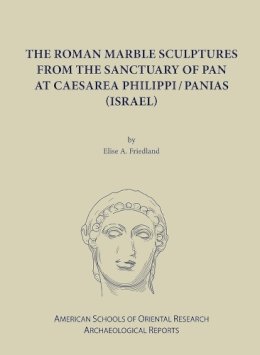
Roman Marble Sculptures From The Sanctua
Elise A. Friedland
Includes 95 b/w figures and 8 tables.
This is the first publication on a deposit of broken marble statues, discovered in 1992 during excavations of the Roman Sanctuary of Pan at Caesarea Philippi , in Panias, Israel.
From 245 fragments, twenty-nine statues ranging from colossal to miniature and representing mainstream Graeco-Roman deities and mythological figures are reconstructed. Most date stylistically to the first through the late fourth centuries AD.
A catalogue discusses each sculpture's subject, comparanda, workshop associations, and date; three interpretive chapters present the artistic and material origins of the sculptures; patterns of patronage, chronology of sculptural dedication, and display; and sculptural evidence for the sanctuary's pantheon.
Product Details
About Elise A. Friedland
Reviews for Roman Marble Sculptures From The Sanctua
